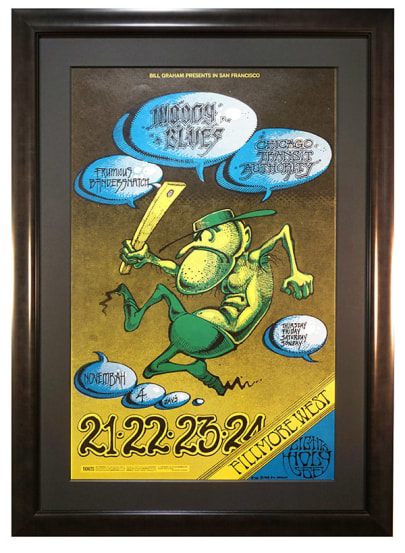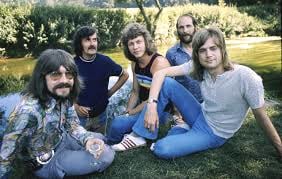

The Moody Blues were formed in Birmingham, England, in 1964, initially consisting of keyboardist Mike Pinder, multi-instrumentalist Ray Thomas, guitarist Denny Laine, drummer Graeme Edge, and bassist Clint Warwick. The group came to prominence playing rhythm and blues music. They made some changes in musicians but settled on a line-up of Pinder, Thomas, Edge, guitarist Justin Hayward, and bassist John Lodge, who stayed together for most of the band's "classic era" into the early 1970s.
Their sound was originally classic mid-sixties British pop, and they cut one album, The Magnificent Moodies, in 1965 and had a top ten hit, “Go Now,” that same year. But by 1967, having established the new line-up, they had slipped from view and were playing shows in Belgium. “It was about the only place where there was still a demand for the band. When we got back to England, it looked like we had no future. We were getting dwindling crowds and decreasing money.” - Justin Hayward
He recalled how "it all came to a head when we did a show in Stockton during March 1967. We were so bad, a fan accosted us afterwards and told us we were the worst band he’d ever seen, and we’d ruined the night for him and his wife who’d paid £12 for a night out and had seen the dreadful Moody Blues! On the way back in the van, Graeme – who was asleep lying over the equipment at the back – suddenly woke up and said quietly, ‘That guy was right. We are rubbish!’ It was the moment we ditched the R&B covers, got rid of our Moody Blues suits and decided to stand or fall by our own songs.
Very few psychedelic posters featuring the Moody Blues exist as they did not reach San Francisco until November of 1968 when Chet Helms was losing his lease on the Avalon leaving Bill Graham as the Big Man on Campus - indeed, the Bill Graham concerts at the Fillmore west and Winterland continued to be promoted using psychedelic and surreal art posters.
Their second album, Days of Future Passed, which was released in 1967, was a fusion of rock with classical music which established the band as pioneers in the development of art rock and progressive rock. It has been described as a "landmark" and "one of the first successful concept albums". Nevertheless, the Moody Blues didn’t cross The Pond until mid-October 1968, in support of their July release of “In Search of the Lost Chord.”
It was “In Search Of The Lost Chord,” that truly reinvented the Moodies as “free-spirited hipsters whose vaulting ambition chimed with the free- spirited times of the psychedelic era. Released at the height of summer, In Search Of The Lost Chord was a helix of spiritual and philosophical ideas that appeared to offer both enlightenment and new ways of living. There were mystical songs about exploration, the astral plane, higher consciousness, hippiedom’s own pet guru Timothy Leary, and even a ringing Hindu mantra with four-part vocal harmonies and cross-echo. The music was often kitted out to match: woodwinds, backwards guitars, tablas, harpsichords. And of course there were sitars, the default signifier for any ‘serious’ seeker amid the bells ’n’ beads of the 60s counterculture. Above all, the album’s rich, buoyant tones refracted the idealism of the times through a neat psychedelic prism. It was a record that suggested the new generation might actually win.” - Rob Hughes
In May 1969 the band released “On The Threshold of a Dream.” They made a brief trip to play New York’s Singer Bowl August 1 and the Atlantic City Pop Festival but flew back to Europe. They had been were invited to play at Woodstock and in fact, several Woodstock posters show them as performers. But they cancelled their appearance there and according to Justin Hayward, they played at a rally in Paris, France instead. (Doh!)
They released To Our Children’s Children’s Children” in late November 1969, and that Fall and and through the summer of 1970 the Moodies played several tours of the US, mostly at colleges and similar medium-sized rooms. In August 1970, “A Question of Balance,” was released and by late Fall they had moved on up into arena and stadiums. Having by now defined their own psychedelic style and helped to define the progressive rock (then also known as 'art rock') sound, “Question” reached No. 3 in the American charts, indicative of the band's growing success in America. The group toured extensively through the early 1970s, then took an extended hiatus from 1974 until 1977.